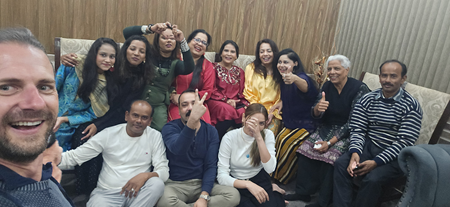Mindfulness
Mindfulness is a practice that encourages us to be fully present in the moment, and breathing is a fundamental aspect of this practice. Focusing on our breath can cultivate awareness, deepen our connections to ourselves and others, and enhance our overall sense of well-being.
Mindfulness and Breath: Connection, Awareness, and Movement
1. The Importance of Breath
Anchor to the Present:
Our breath is always with us, making it an excellent anchor to bring our attention back to the present moment. When we focus on our breathing, we can quiet the mind and reduce distractions.
Physiological Benefits: Mindful breathing activates the parasympathetic nervous system, promoting relaxation and reducing stress. This can lead to lower heart rates and improved overall health.
2. Cultivating Awareness
Mindfulness encourages us to observe our breath without judgment. Notice its rhythm, depth, and quality. This practice enhances our awareness of our bodies and emotions.
Mindful Moments: Throughout the day, we can take a few moments to check in with our breath. This simple act can help ground us during stressful situations and foster a greater sense of clarity.
3. Connection
Connection to Self:
By tuning into our breath, we create a deeper connection with ourselves. This awareness allows us to recognize our thoughts and feelings, fostering self-acceptance and compassion.
Connection to Others.
Mindfulness can also enhance our relationships. When we practice mindful breathing in social situations, we are more present and engaged, improving our connections with others.
4. Movement and Mindfulness
Integrating Movement:
Mindful breathing can be integrated into physical activities like yoga, walking, or even everyday tasks. By synchronizing breath with movement, we create a flowing, meditative experience that enhances both physical and mental well-being.
Embodied Presence:
Movement combined with mindful breathing helps us connect with our bodies on a deeper level. This embodied presence can lead to increased awareness of our physical sensations and emotions.
5. Practicing Mindfulness through Breath
To cultivate mindfulness through breath, consider these simple practices:
Breath Awareness:
Set aside a few minutes each day to focus solely on your breath. Notice how it feels as you inhale and exhale.
-Breathing Techniques: Explore different breathing techniques, such as deep belly breathing or counting your breaths, to enhance relaxation and focus.
Mindful Movement:
Try activities like yoga or tai chi, where breath and movement are intertwined, to deepen your mindfulness practice.
By embracing mindfulness through breath, we can enhance our awareness, foster connection, and create a more harmonious relationship with ourselves and the world around us. This practice not only enriches our daily lives but also empowers us to navigate challenges with greater ease and resilience.
